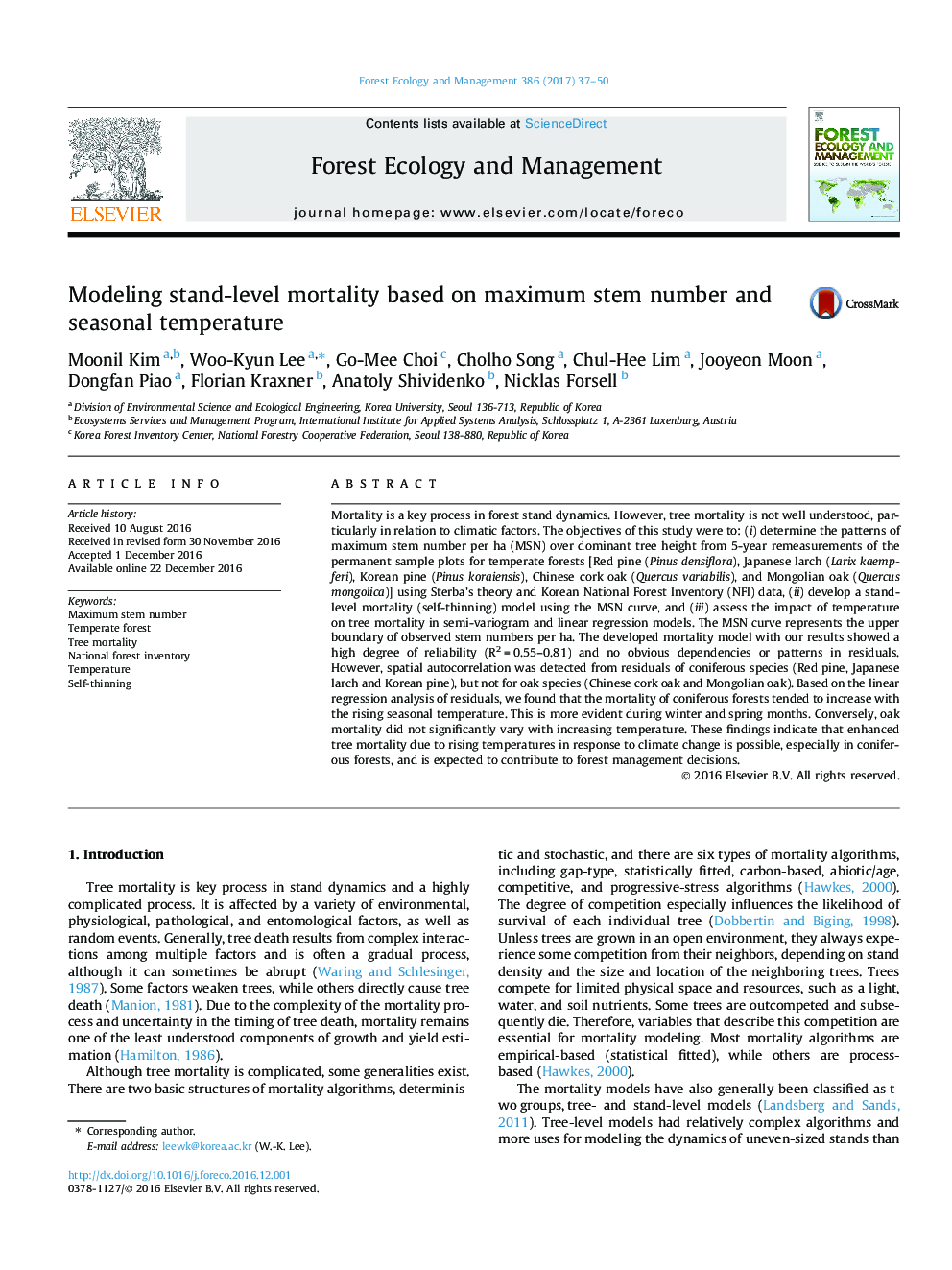| Article ID | Journal | Published Year | Pages | File Type |
|---|---|---|---|---|
| 4759592 | Forest Ecology and Management | 2017 | 14 Pages |
Abstract
Mortality is a key process in forest stand dynamics. However, tree mortality is not well understood, particularly in relation to climatic factors. The objectives of this study were to: (i) determine the patterns of maximum stem number per ha (MSN) over dominant tree height from 5-year remeasurements of the permanent sample plots for temperate forests [Red pine (Pinus densiflora), Japanese larch (Larix kaempferi), Korean pine (Pinus koraiensis), Chinese cork oak (Quercus variabilis), and Mongolian oak (Quercus mongolica)] using Sterba's theory and Korean National Forest Inventory (NFI) data, (ii) develop a stand-level mortality (self-thinning) model using the MSN curve, and (iii) assess the impact of temperature on tree mortality in semi-variogram and linear regression models. The MSN curve represents the upper boundary of observed stem numbers per ha. The developed mortality model with our results showed a high degree of reliability (R2Â =Â 0.55-0.81) and no obvious dependencies or patterns in residuals. However, spatial autocorrelation was detected from residuals of coniferous species (Red pine, Japanese larch and Korean pine), but not for oak species (Chinese cork oak and Mongolian oak). Based on the linear regression analysis of residuals, we found that the mortality of coniferous forests tended to increase with the rising seasonal temperature. This is more evident during winter and spring months. Conversely, oak mortality did not significantly vary with increasing temperature. These findings indicate that enhanced tree mortality due to rising temperatures in response to climate change is possible, especially in coniferous forests, and is expected to contribute to forest management decisions.
Related Topics
Life Sciences
Agricultural and Biological Sciences
Ecology, Evolution, Behavior and Systematics
Authors
Moonil Kim, Woo-Kyun Lee, Go-Mee Choi, Cholho Song, Chul-Hee Lim, Jooyeon Moon, Dongfan Piao, Florian Kraxner, Anatoly Shividenko, Nicklas Forsell,
